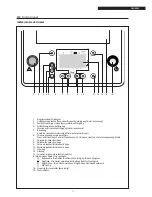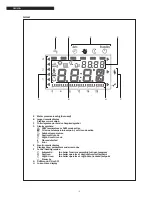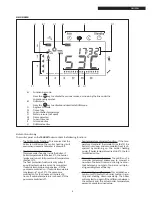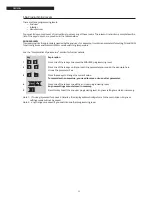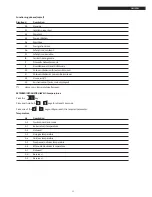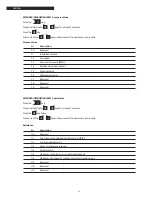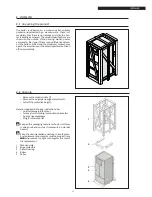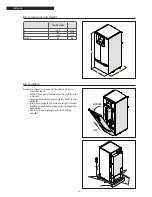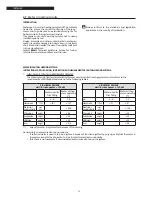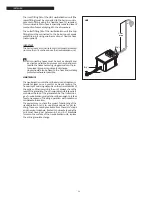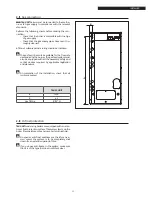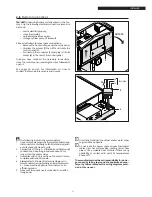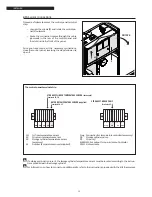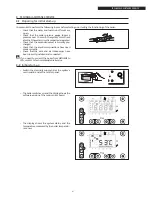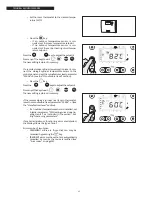
27
INSTALLER
2 .5
Place of installation
This
TAU 35 UNIT
boiler can be installed in any indoor
location provided the flue gases are adequately remo-
ved and comburent air drawn in from outdoors. Pro-
vided the boiler is properly installed, the boiler room
itself does not need any ventilation as such, since the
combustion circuit of the
TAU 35 UNIT
boiler is sealed
with respect to the environment. If instead comburent
air is drawn from inside the boiler room itself, the room
must have adequately dimensioned ventilation confor-
ming to the relevant technical standards.
9
In Belgium, boilers must be installed according to
standards NBN D51.003, NBN B61.002 (heat output <
70 kW), and NBN B61.001 (heat output >70 kW).
9
When installing the boiler, allow sufficient space
around it to access all safety and control devices
and to permit easy maintenance.
9
Make sure that the boiler’s index of electrical pro-
tection is adequate for the characteristics of the
room where it is to be installed.
0
These boilers must be installed indoors. They are
not designed for outside use.
2 .6
Installation in older systems and systems requiring modernisation
≥ 0,8 m
≥ 0,8 m
≥ 1 m
≥ 1 m
L
H
P
NOTE: See the table on the previous page for boiler di-
mensions.
When installing these boilers in older systems or systems requiring modernisation, always perform the following
checks.
− Make sure that the flue is able to withstand the
temperature of the combustion gases and that
it has been designed and made in compliance
with applicable standards. The flue must also be
as straight as possible, sealed, insulated and not
blocked or choked.
− Make sure that the flue is fitted with a conden-
sation drainage union.
− Make sure that the electrical system has been in-
stalled by a qualified electrician in compliance
with applicable standards.
− Make sure that flow rate, head and direction of
flow of the pumps are suitable and correct.
− Make sure that the fuel feed line and any storage
tank are made and installed in compliance with
applicable standards.
− Make sure that expansion vessels are big enough
to contain the additional volume generated by
thermal expansion.
− Make sure that the central heating circuit has
been flushed out to remove all sludge and lime
scale, and that it has been bled and seal tested.
− Make sure that a suitable water treatment system
is installed. (See the “Water in central heating sy-
stems” section.) Refer to the
R
catalogue for
details of specific products.





